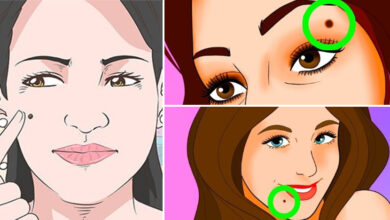Symptoms of NAFLD
In many cases of NAFLD, there are no noticeable symptoms. When symptoms are present, they usually include:
- pain in the upper right side of the abdomen
- fatigue / weakness
- weight loss
- fluid and swelling in the stomach (ascites) and legs (edema)
- jaundice, or yellowing of the skin and eyes
Causes of NAFLD
The exact causes of NAFLD aren’t well understood. Currently, researchers believe genes, certain health conditions, diet, and the digestive system may all play a role.
While some individuals who are diagnosed with NAFLD have no previous risk factors, there are some lifestyle factors that can increase the likelihood of a NAFLD diagnosis.
Risk factors
One of the biggest risk factors for developing NAFLD is living with obesity.
Additional risk factors include health issues that often occur along with obesity, such as type 2 diabetes and metabolic syndrome (a group of traits and conditions linked to living with obesity).
If you’re diagnosed with more than one of these health issues, your chances of developing NAFLD go up.
Other risk factors include:
- high triglyceride levels
- high cholesterol
- a diet high in fructose (a type of sugar)
- a disruption in your microbiome (your gut)
How NAFLD is diagnosed
NAFLD usually has no symptoms. The condition is typically diagnosed after a blood test finds higher-than-normal levels of liver enzymes. A standard blood test could reveal this result.
High levels of liver enzymes could also suggest other liver diseases. Your doctor will need to rule out other conditions before diagnosing NAFLD.
If NAFLD is suspected, your doctor may look for physical symptoms like signs of insulin resistance (darker skin patches over your knees, knuckles, and elbows), and signs of cirrhosis (ascites and/or muscle loss).
Additional tests
An ultrasound of the liver can help reveal excess fat in the liver. Another type of ultrasound, called transient elastography, measures your liver’s stiffness. Greater stiffness suggests greater scarring.
If these tests are inconclusive, your doctor may recommend a liver biopsy. In this test, the doctor removes a small sample of liver tissue with a needle inserted through your abdomen. The sample is studied in a lab for signs of inflammation and scarring.
Even though the side effects of NAFLD often go unnoticed, if you have symptoms such as right-side abdominal pain, jaundice, or swelling, see a doctor as soon as you can.
Can nonalcoholic fatty liver disease cause complications?
The main risk of NAFLD is cirrhosis, which can limit your liver’s ability to do its job. Once you’ve been diagnosed with cirrhosis, it can’t be reversed, but there are treatment options that can slow it down, or stop it.
If cirrhosis is not slowed or stopped, it can result in liver failure, which means your liver can no longer do its job. This may mean you’ll need a liver transplant.
Liver cancer is another possible complication of untreated cirrhosis.
Managing NAFLD
There is no specific medication or procedure to treat NAFLD. Instead, your doctor will most likely recommend several important lifestyle changes. These include:
- losing weight (if you’re currently living with extra weight)
- eating a nutrient-dense diet full of vegetables, fruits, and whole grains
- limiting your intake of unhealthy fats and added sugars
- increasing physical activity
- managing your cholesterol and blood glucose levels
- avoiding alcohol
It’s also important to follow up on doctor appointments and report any new symptoms.
What is the outlook for nonalcoholic fatty liver disease?
If you’ve been diagnosed with nonalcoholic fatty liver disease, sticking to recommended lifestyle changes may be enough to preserve good liver health for a long time. You may even be able to reverse liver damage in the earliest stages of the disease.
Even if you don’t feel any symptoms from NAFLD, that doesn’t mean liver scarring isn’t occurring. If you believe you may be at risk for developing this condition, your doctor can help you figure out if you need any additional testing done.
The good news is that the same lifestyle choices that can manage NAFLD can also help manage, or reverse, other health issues such as type 2 diabetes, high cholesterol, and metabolic syndrome.




